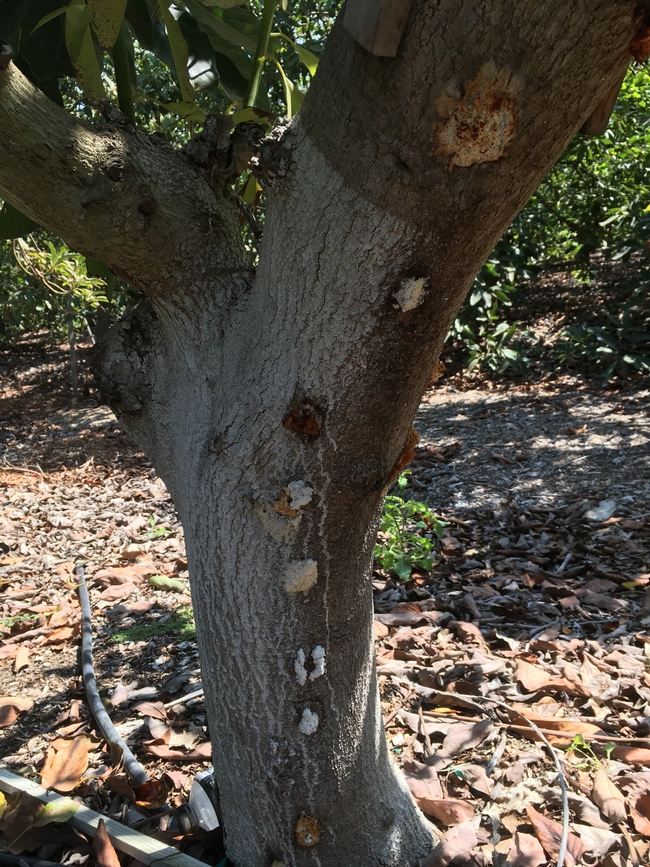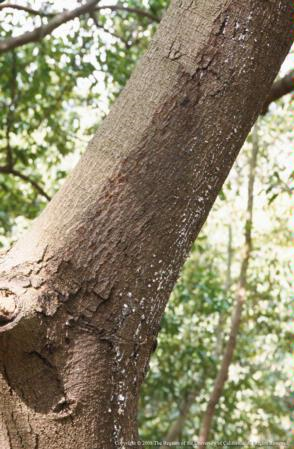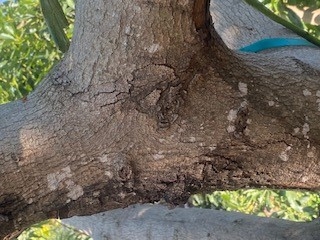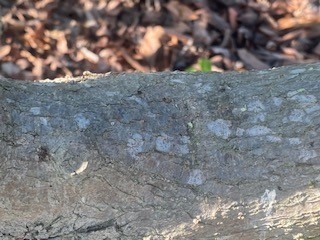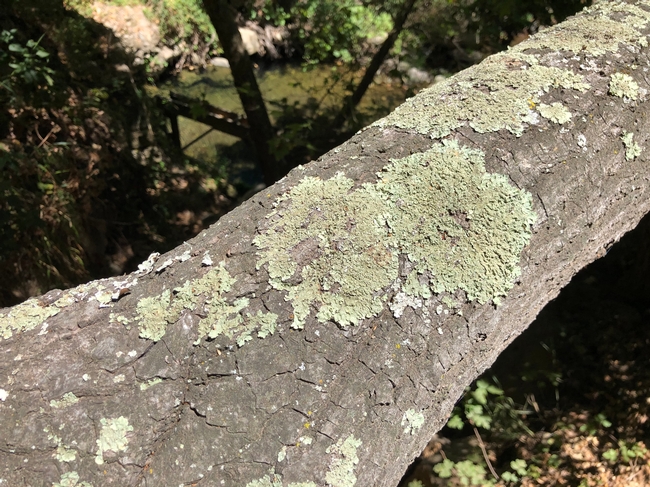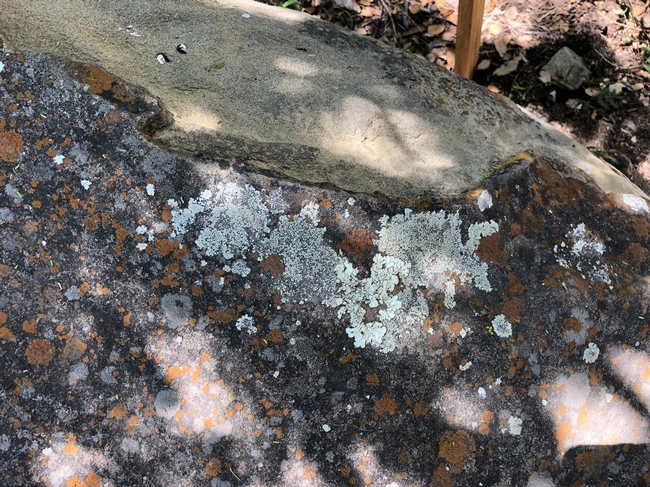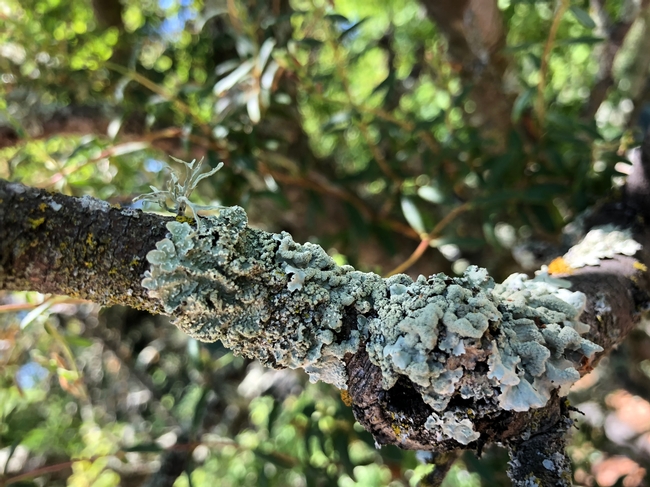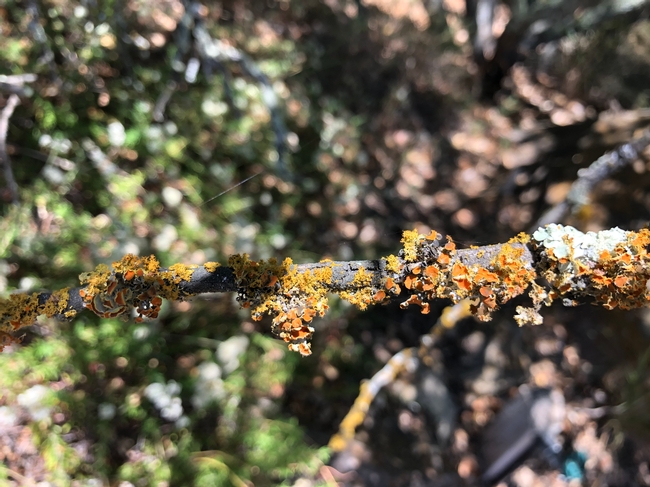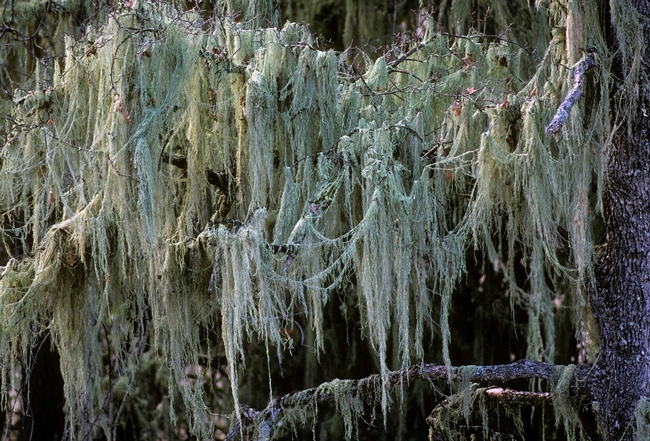Not everything you see on a tree's bark is disease, although that's usually the first thought of a plant pathologist. Below are bacterial canker and black streak which are both significant problems in some California avocado orchards. Their cause is normally an issue of water/salt management.
But sometimes these patches are innocuous. In a recent farm call, and the “thing” on the bark was a hybrid organism called a lichen. This is a classic odd ball of nature. It consists of a blue-green algae called a cyanobacteria – photosynthetic single cells making sugar – and a fungus that serves to protect the algae from the elements. The fungus is farming the algae, in a way. Neither, though, does well on its own. In fact, it's been difficult to recreate the lichen relationship in the lab, starting with the separate, independent partners.
These are tough “beasts” surviving on most continents, in some very harsh environments. When the going gets rough, they just close up on themselves and survive until the right moisture conditions occur. And, within an hour they can spring forth full of color. The rest of the time, they might just hang on a rock.
Some of the algae also fix nitrogen from the air, so lichen really are self-sustaining. They just need somewhere to grow, a tree, a rock, a roof. They take amazing shapes and colors and they are also known for producing some interesting toxins that could be used as medicines.
These life forms have been studied for over 150 years and have been recognized as kind of the standard for a "mutualism", a symbiosis where the two participants benefit from each other. Only in the last few years has it been recognized that there is often a third component to this symbiosis - various yeasts that are the likely producers of the toxins. Toxic for some life forms like other bacteria, algae or animals, but not others. For some animals, lichens can be an important food source, such as for caribou, reindeer and musk ox. Animals and lichen that are all growing in a harsh climate.
The California state lichen is Spanish Moss or Lace Lichen, neither moss nor lace nor Spanish, but Ramalina menziesii. It is not to be confused with that other Spanish Moss found around the world, in the genus Usnea. It's all worth reading about, because it can get so confusing
